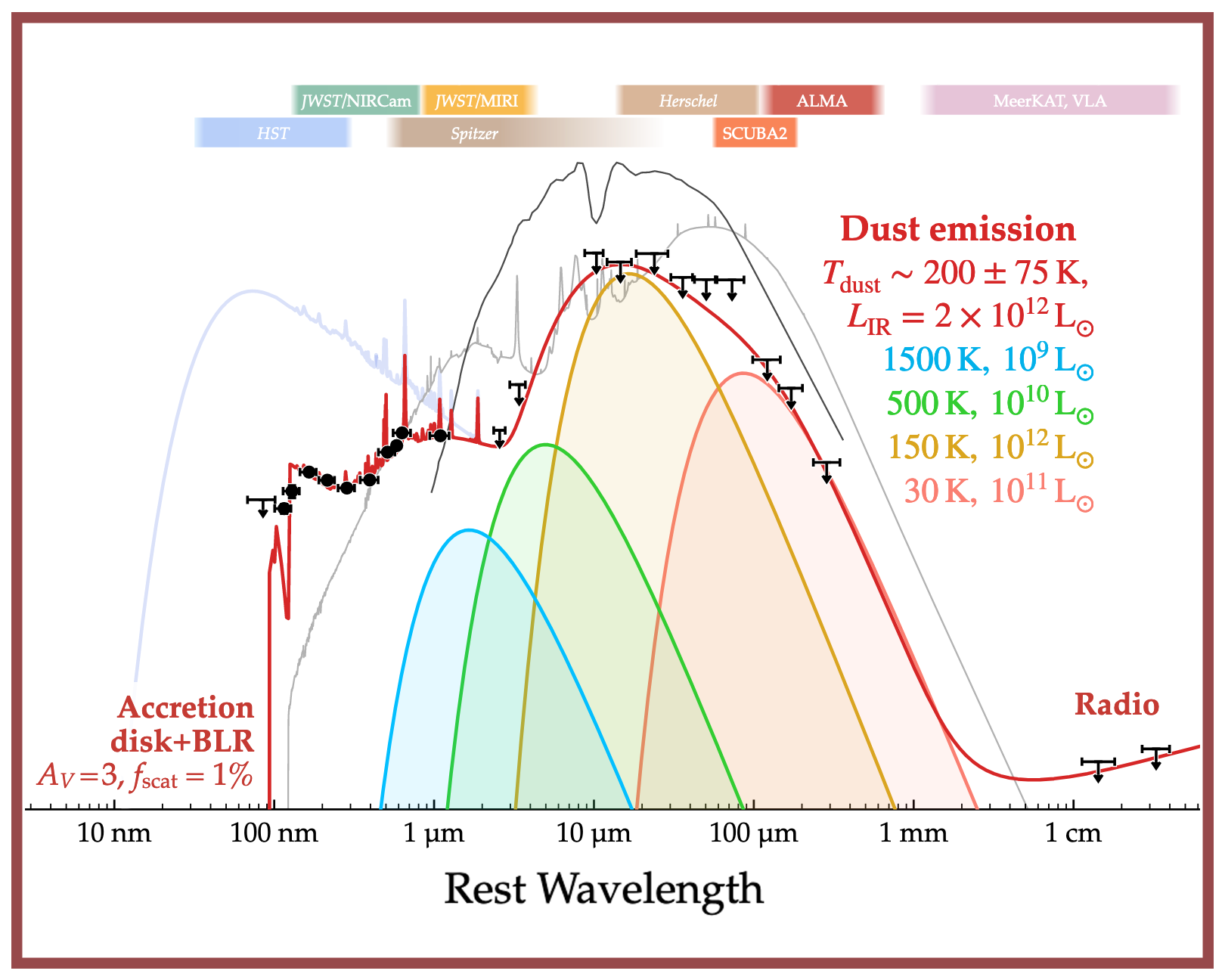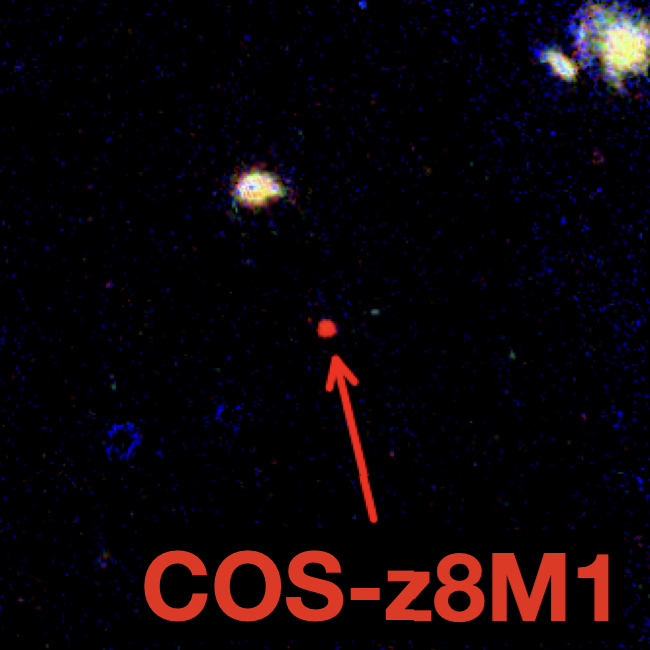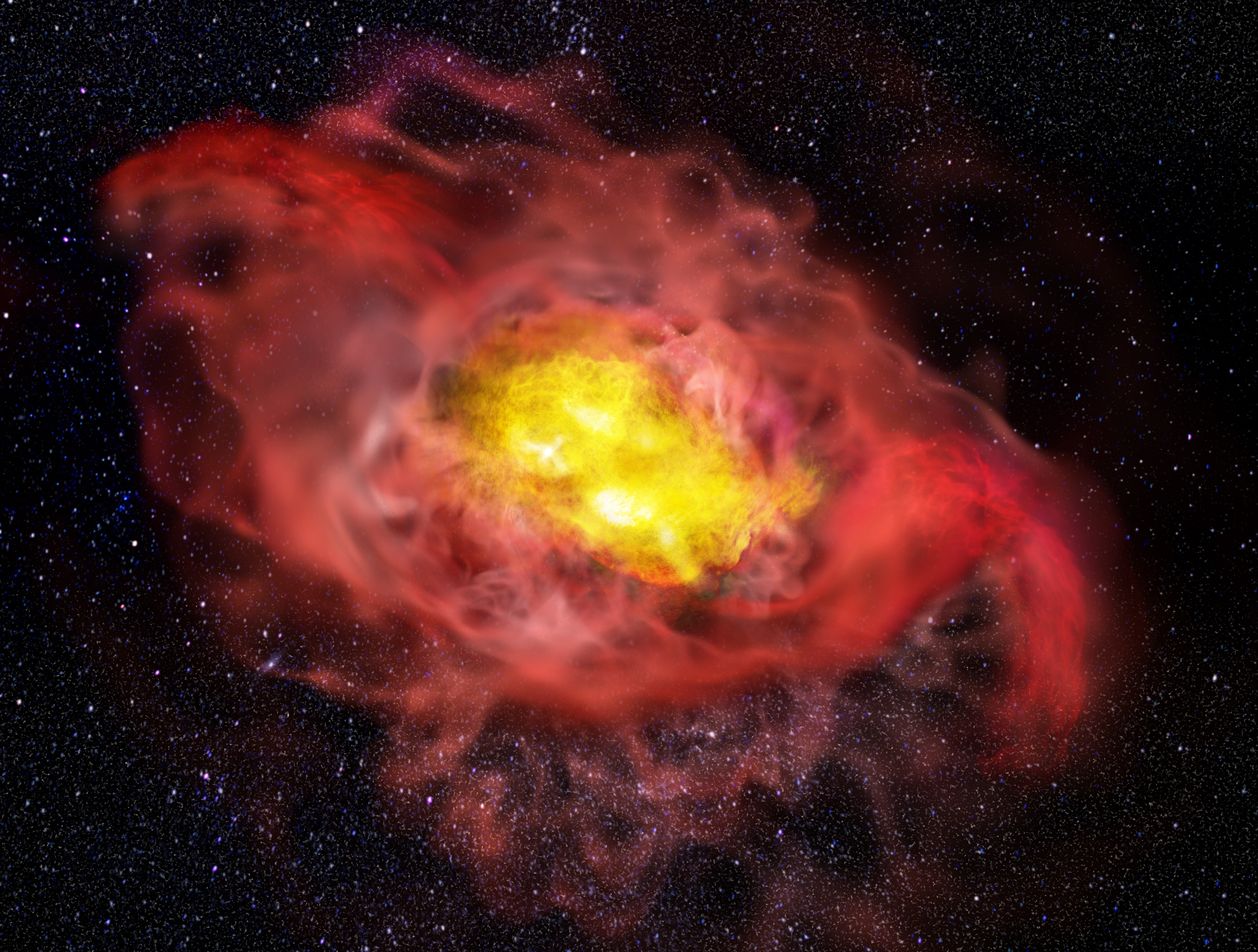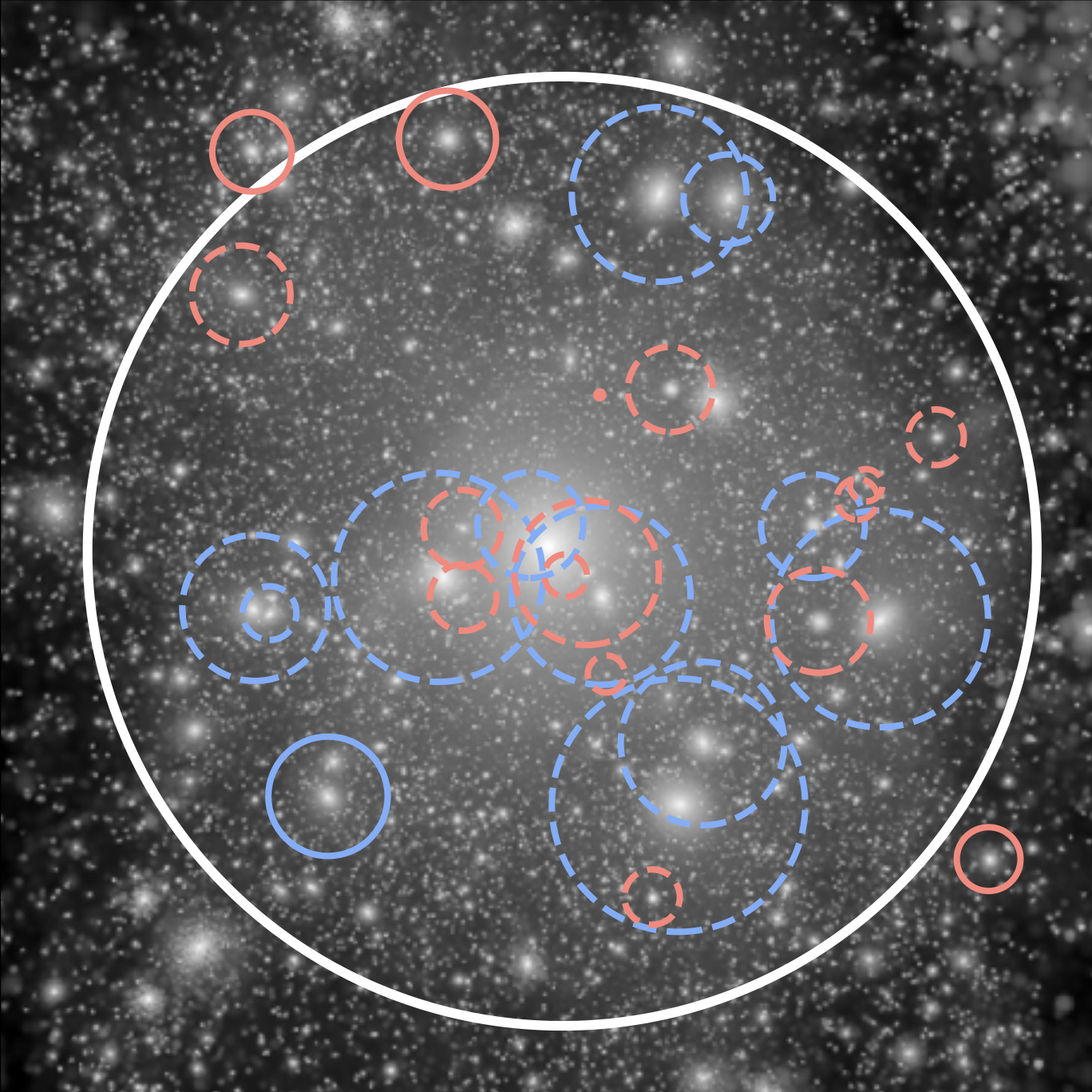ALMA Reveals Extended Cool Gas and Hot Ionized Outflows in a Typical Star-forming Galaxy at z = 7.13
Hollis B. Akins, Seiji Fujimoto, Kristian Finlator, and
9 more authors
The Astrophysical Journal, Jul 2022
We present spatially resolved morphological properties of [C II] 158 μm, [O III] 88 μm, dust, and rest-frame ultraviolet (UV) continuum emission for A1689-zD1, a strongly lensed, sub-L* galaxy at z = 7.13, by utilizing deep Atacama Large Millimeter/submillimeter Array (ALMA) and Hubble Space Telescope (HST) observations. While the [O III] line and UV continuum are compact, the [C II] line is extended up to a radius of r ~ 12 kpc. Using multi-band rest-frame far-infrared continuum data ranging from 52 to 400 μm, we find an average dust temperature and emissivity index of \{T}_{}mathrm{dust}}={41}_{-14}^{+17} K and {}beta ={1.7}_{-0.7}^{+1.1} , respectively, across the galaxy. We find slight differences in the dust continuum profiles at different wavelengths, which may indicate that the dust temperature decreases with distance. We map the star formation rate (SFR) via IR and UV luminosities and determine a total SFR of 37 ± 1M ⊙yr-1 with an obscured fraction of 87%. While the [O III] line is a good tracer of the SFR, the [C II] line shows deviation from the local L [C II]-SFR relations in the outskirts of the galaxy. Finally, we observe a clear difference in the line profile between [C II] and [O III], with significant residuals (~5σ) in the [O III] line spectrum after subtracting a single Gaussian model. This suggests a possible origin of the extended [C II] structure from the cooling of hot ionized outflows. The extended [C II] and high-velocity [O III] emission may both contribute in part to the high L [O III]/L [C II] ratios recently reported in z \textgreater 6 galaxies.
 COSMOS-Web: The over-abundance and physical nature of “little red dots”–Implications for early galaxy and SMBH assemblyarXiv e-prints, Jun 2024
COSMOS-Web: The over-abundance and physical nature of “little red dots”–Implications for early galaxy and SMBH assemblyarXiv e-prints, Jun 2024 Two Massive, Compact, and Dust-obscured Candidate z ≃ 8 Galaxies Discovered by JWSTThe Astrophysical Journal, Oct 2023
Two Massive, Compact, and Dust-obscured Candidate z ≃ 8 Galaxies Discovered by JWSTThe Astrophysical Journal, Oct 2023

